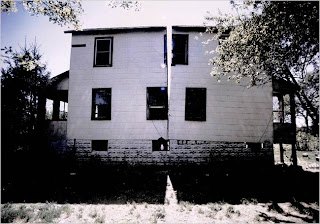Chia-En Jao
b.1976, Taipei, Taiwan
Lives and works in Taipei
Lives and works in Taipei
http://www.qagoma.qld.gov.au/exhibitions/current/apt7_asia_pacific_triennial_of_contemporary_art/artists/chia-en_jao



Chia-En Jao, Taiwan b.1976 | REM/Sleep 2011 | Three-channel HD video projection, 63:42 minutes, sound, colour, English subtitles | Courtesy and © : The artist
Chia-En Jao is fascinated by the relationship between identity, languages and cultures. In REM sleep 2011, the viewer experiences an intimate moment with Vietnamese, Indonesian and Filipino migrant workers in Taiwan. These workers have been coming to Taiwan as domestic servants, nurses or carers of the aged since the 1990's.
In the video installation, the workers awake from a sleep and recount their fears and aspirations through their dreams to the camera. The migrants are asleep in makeshift beds giving the impression that they are snatching a few hours, or even minutes from their lives as domestic help, i.e., a life of drudgery. Many of them have children at home that are being raised by their grandparents and that they are supporting by working abroad. The dreams they experience are quite disturbing for them. One of the female migrants recounts arriving home and not being recognised by friends and family and feeling as though she had never existed.
In the video installation, the workers awake from a sleep and recount their fears and aspirations through their dreams to the camera. The migrants are asleep in makeshift beds giving the impression that they are snatching a few hours, or even minutes from their lives as domestic help, i.e., a life of drudgery. Many of them have children at home that are being raised by their grandparents and that they are supporting by working abroad. The dreams they experience are quite disturbing for them. One of the female migrants recounts arriving home and not being recognised by friends and family and feeling as though she had never existed.
As is a consistent theme with migration, migrants are prepared to do the menial jobs for low pay that the people of the host country aren't prepared to do. According to an article on news.com.au this is also the case here in Australia. The article is entitled, "Lucky country becomes lazy: Migrant workers to do 'dirty' jobs." http://www.news.com.au/business/australia-the-lucky-country-has-become-lazy/story-e6frfm1i-1226255836042
In Australia we consider ourselves a multicultural society. Our first generation migrants have struggled in the same way as these workers trying to adapt to a new country, language and culture as shown by Chia-En Jao. Since British colonisation Australia has seen:
- Chinese migration in the 1840's due to the discovery of gold,
- "10 pound poms",
- Southern European migration (Italians and Greeks) which occurred mainly after WWII,
- Vietnamese boat people of the 1970's, and
- Asylum seekers of today.
10 pound poms - an interesting account of how the British came to Australia looking for a better way of life and what they found.
http://www.youtube.com/watch?v=Rq0yib40KcI
It is interesting that Chia-En Jao uses dreams to show us the underlying fears and concerns for these migrants. In a study published in 2009, in the Journal of Personality and Social Psychology entitled, "Attitudes and Social Condition", Morewedge and Norton concluded that the meaningfulness that their participants placed on their dreams depended upon their belief structure with regard to friends, family and religion. The results showed that people engage in a motivated interpretation of their dreams and that how they viewed their dreams impacted on their lives. This was true for both eastern and western cultures. http://www.andrew.cmu.edu/user/morewedg/personal/papers/dreams2.pdf










.jpg)




.jpg)
















.jpg)



